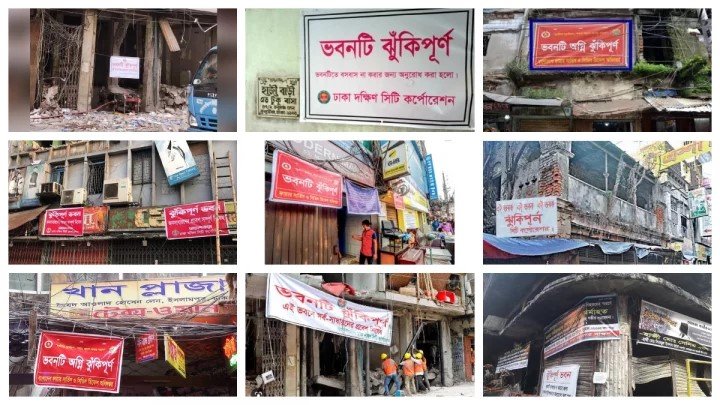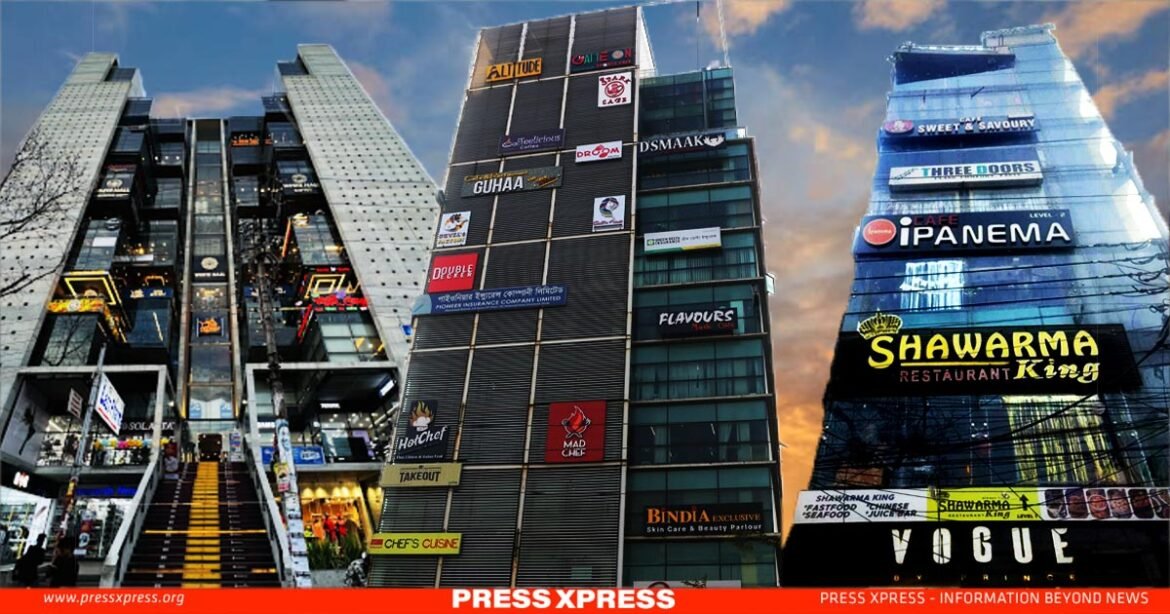In response to the tragic incident at Green Cozy Cottage in Bailey Road, where 46 lives were lost in a devastating blaze, several government agencies including the Rajdhani Unnayan Kartripakkha (RAJUK), city corporations, and the Dhaka Metropolitan Police (DMP) have conducted raids on approximately 50 restaurants in areas like Dhanmondi, Mohammadpur, Gulshan, and Bashundhara, resulting in over 40 arrests since Sunday afternoon.
You Can Also Read: Negligence on Building Codes Put Dhaka Residents at Risk
However, questions linger regarding the effectiveness of these impromptu campaigns and the selective targeting of hazardous buildings.
” We are sending letters and warnings to the risky hotels and restaurants in every area. And then conducting raids,”
Kh Mahid Uddin, additional commissioner of DMP.
Lack of Coordination in Operations
Various government agencies, including the Rajdhani Unnayan Kartripakkha (RAJUK), city corporations, and the Dhaka Metropolitan Police (DMP), have initiated raids on buildings across different areas. However, the lack of coordination and a unified strategy in these operations raises concerns about their effectiveness.
Questions on Approval Processes
Imran Hasan, the general secretary of the Bangladesh Restaurant Owners Association, has raised pertinent questions regarding the approval processes for these establishments. Hasan highlighted that many restaurants operate with licenses issued by city corporations and approvals from RAJUK. He questioned why action is being taken against these establishments without prior notice, emphasizing the need for dialogue between authorities and business owners.
Inspection and Legalization
After every major accident in the country, authorities gather to discuss the issue, a routine occurrence. In response, a comprehensive plan has been devised to identify all at-risk buildings, with collaboration from third-party entities such as BUET.
“With the implementation of a policy, the issue of illegal buildings in Dhaka city can be addressed effectively. A guideline has been proposed for RAJUK’s crackdown on illegal constructions, outlining criteria for identifying buildings as illegal, dangerous, or severely compromised. Following the raids, pertinent information regarding the status of these buildings must be documented. These protocols have been established to ensure clarity and consistency in handling such matters,”
– Architect Ekbal Habib

This decision was made during a meeting of the National Urban Development Committee at RAJUK Bhavan earlier this month. An inter-ministerial meeting has been suggested to finalize the policy. It is proposed in the meeting to appoint a third party to assess the defects or risks of buildings under RAJUK’s jurisdiction. The policy is expected to be finalized within the next ten working days.
As per meeting sources, all buildings in the capital will undergo inspections. The policy will also address whether a building should be demolished or not. Additionally, the process of legalizing illegal buildings will be outlined. The committee has recommended legalizing illegal structures with a fine five times the standard fee, pending finalization at the inter-ministerial meeting.
The Risk Review Committee will consist of experienced professionals in relevant fields, including representatives from BUET, the Institute of Engineers, the Bangladesh Institute of Planners (BIP), and technical representatives from RAJUK.
Architect Iqbal Habib, a member of the National Urban Development Committee, stated to the media, “Having a policy in place will bring structure to illegal buildings in Dhaka city. Guidelines have been proposed for RAJUK’s crackdown on unauthorized construction.”
It is worth noting that accurate records of at-risk buildings in the capital are currently lacking within North City Corporation, South City Corporation, Capital Development Authority, Ministry of Housing and Public Works, and Ministry of Disaster Management and Relief.
In the latest survey conducted by the fire service authorities from January 1, 2023, to December 31, 2023, 5,376 multi-storey buildings, industrial facilities, market complexes, government structures, and other buildings were inspected across eight divisions of the country including Dhaka. Among them, 424 buildings were identified as high fire risk and 1,694 were deemed at risk.

Identifying Dangerous Buildings
Recent fire service inspections revealed that 2,603 buildings in Dhaka are at high risk, including educational institutions, hospitals, and residential buildings. RAJUK lacks precise data on the total number of buildings in Dhaka, underscoring the challenge of regulating a vast urban landscape. Ashraful Islam, director of RAJUK’s Detailed Area Planning (DAP) Project, assured continued operations contingent upon police support, promising scrutiny beyond eateries to include other hazardous structures.

Call for Coordination
Dr Adil Mohammed Khan (Faculty member at the Urban and Regional Planning Department of Jahangirnagar University) has criticized the current campaigns for their fragmented nature, emphasizing the need for a coordinated effort among the various government agencies responsible for addressing defective buildings. He highlighted the importance of collaboration among the six or seven government agencies involved to ensure the effectiveness of their operations.
Prof. Khan pointed out that beyond restaurants, there are numerous other buildings that require attention, questioning the absence of a unified campaign strategy. He expressed concern over the lack of coordination in addressing these issues, noting that during raids, restaurant employees are being unfairly targeted while building owners remain untouched.
Addressing the complexity of the situation, Prof. Adil Mohammad Khan stressed the necessity of focusing on accountability. He raised pertinent questions about the approval processes for these buildings and hotels, calling for scrutiny of individuals involved in these approvals such as RAJUK employees, fire service personnel, and city corporation officials. He questioned why these key stakeholders have not faced consequences and urged for a comprehensive campaign to address their roles in ensuring building safety and compliance.
Conclusion
As operations against non-compliant buildings unfold, it is imperative for government agencies to address concerns regarding effectiveness, accountability, and coordination. By fostering collaboration and transparency, authorities can instill public confidence and mitigate the risks posed by hazardous structures. Only through concerted and unified action can Dhaka navigate the complexities of urban development and safeguard the well-being of its residents.


